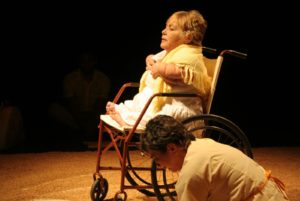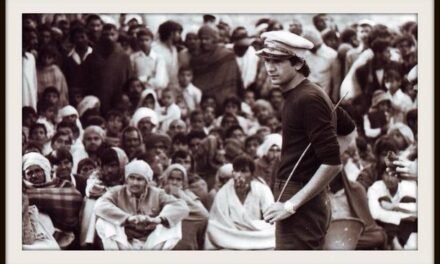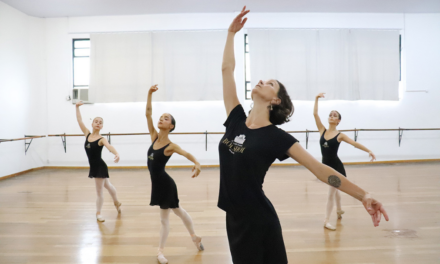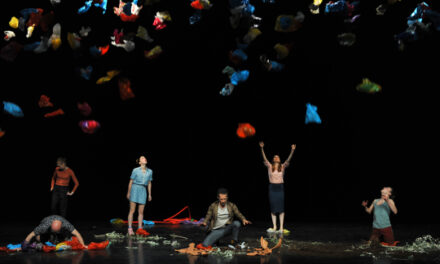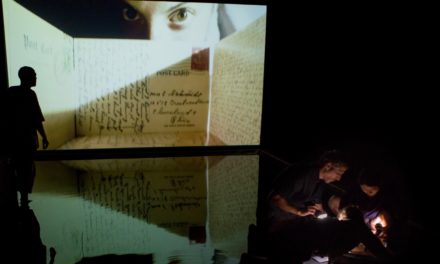In January 2016, I took part of a round table entitled The Disabled People’s Protagonism in the Arts. It was organized by Paula De Renor, one of the directors of the international performing arts festival Janeiro de Grandes Espetáculos (January of Great Performances). This roundtable was our third collaboration working with disabled artists, and it was a huge success. Many conversations blossomed from there.
The questions raised were around leadership in the art field, access to funds and support, how to lead a creative and productive life, achieve excellence on any work of art, especially when you are a disabled person. How can a disabled artist function as any other citizen when society sees them as people who need help to accomplish their tasks, as people who are not able to do things for themselves, or who always need someone to speak for them or be with as if they were children?
In general, disability is not seen to be synonymous with leadership. According to the Social Model, disability is defined as a social construct. Disability is created by the organizational, attitudinal and physical barriers. This approach provides us with a dynamic and positive model that allows us to identify the problems and propose solutions. It differs from the Medical Model that blames the individuals for their impairments. The Social Model brings up the idea that disabled is the society, and promotes the idea that the only logical way to create a fairer world is through better planning and organizing the social environments in a way that it becomes more inclusive to disabled people resulting in a more inclusive society to everyone.
The Social Model allows for the disabled people to express their situation concerning Human Rights, or equality issues, challenging the traditional medical model based solely on assistance and cure. So the disabled artist should be seen as autonomous and able to lead their own field of expertise, as any other citizen. Society is the one to remove the barriers for the disabled persons to develop their skills and function to their full potential and profit from what the arts can provide as for the most profound transformations.
Responding to these issues, Paula De Renor and I designed a showcase to happen in Rio de Janeiro during the Olympics and Paralympics’ period where we could carry on reflecting and empowering the artists by creating more spaces for practitioners to be able to develop their skills. From this conversation we created the Mostra Acessível Rio das Olimpíadas (Accessible Showcase Olympics Rio), to showcase the best works made by disabled people in Brazil.
Not only did we want to offer an art programme but also to talk about accessibility in the arts from the artist’s perspective; talk about empowering disabled people in general. Also to welcome and support disabled people’s audiences, artists, and performers and encourage inclusive practices.
We wanted to promote the Brazilian disabled artists who work as professionals and who do extraordinary work, as well as creating an environment to share knowledge and experience with practitioners and academics. A space to reflect on how to inspire artists to embed accessible resources within their work. How to have an esthetic discussion involving the artists and the cultural venues managers, organizations and how to make disabled and non-disabled people come closer and explore new ways and new visions of the world departing from their differences.
So to accomplish that, we invited the following pieces: Avental todo sujo de ovo (Egg-Stained Apron) by Grupo Ninho de Teatro from Ceará; Indefinidamente indivisível (Indefinetely Indivisible) by Pulsar Cia de Dança from Rio de Janeiro; Se fosse fácil, não teria graça (If It Was Easy, It Wouldn’t Be Fun), created by the actor Nando Bolognesi from São Paulo; and Sem conservantes (No Conservatives) as well as Proibido elefantes (Elephants Not Allowed), both created by Cia Gira Dança from Rio Grande do Norte.
There was also a workshop with the group Pulsar and a roundtable, during the same week of the shows, creating an effervescent atmosphere of practice and reflection.
AUDIENCES
The main challenge would be how to attract the right audiences. How to reach your target is always a big issue, difficult to answer and essential to accomplish. Our ultimate aim is to have the house fully booked. And we did it!
For Mostra Acessível, there was a specialized professional who knew how to reach the right audiences. All the sessions were sold out. And more than 25% of the public were composed of disabled people, in every session.
As I was reflecting upon the right audiences, and how to attract them, something really significant happened to me. I arrived in Rio a week before the showcase started. It was lunch time, on August 24th . I was alone, dashing to a meeting. I took the underground, and as I traveled from one station to another, I heard a woman’s voice begging for spare change for her companion, a man, younger than her, and visibly blind.
They walked together, and she begged inside the train. I was really curious. Everyone knows it is not allowed to beg inside the station, let alone on the trains. But no one said or did anything. I felt touched, annoyed, curious, and tried to follow them, and see where they would stop. It crossed my mind that the following day, we were going to offer AD (audio description) and a Touch Tour for blind audiences at the showcase.
The play was Avental todo sujo de ovo, so I decided to talk to them, and invite them to come. I explained what is AD (audio description) and Touch Tour, and what exactly the term “accessible resources” mean, a whole new universe for us all.
They said they live hours away from downtown where the venue was, but they would try. Of course, I did not believe they would appear.
Well, on Saturday, we were amongst the production activities just before the Touch Tour started, and there they came on the time agreed! Everyone was so thrilled and amazed by the fact that they came from such a far way distance to see something they had no idea existed. They trusted us!
They had the chance to touch the costumes, talk to each actor, visit and feel the set, wear a headphone and listen to the delicate voice of the wonderful audio describer who gave access to the blind people that evening. Senhor Zé Natal and Dona Eli, his assistant, told me they had never been to the theatre before. Dona Eli takes care of Zé Natal since he was a boy. He has no family, no one he can count on, so she describes herself as his caretaker. She describes the world for him. She explains to the born blind man what yellow, blue and purple mean.
This specific visit was a life-changing experience. The showcase resulted stronger than what we had envisaged. We want to continue, to find more non-disabled and disabled artists working together and make it in the whole of Brazil.
INVESTMENTS
“For any nation wanting to develop diversity in arts and culture, the challenge is to develop a sector where disabled people are included and supported beyond single flash moments so that we are not only put on a show, but we get to run the show! As a result of this society changes irrevocably on the ground and disabled people become a natural part of cultural life, not hidden or placed in the margins. This means investing in the disabled in the long term both because we have the right to be included and also because our artistic contribution is striking and our position in culture indicative of that within society itself.” – Jo Verrent
In 2013 my journey into the Disability Arts sector had started through an invitation I received by the British Council Brazil to develop a national version of the British programme called Unlimited, a scheme to fund, mentor and support disabled artists to develop, produce and show ambitious work. Since then, many of the Unlimited projects have gone on tour internationally, some of them to Brazil, and my role was to articulate, together with the British Council, partners and venues, all of these artists visits and productions.
We also have Brazilian funding models, such as the Arte Sem Limites in Rio, and the showcases such as Mostra Mais Sentidos and ||Entre|| Arte e Acesso in São Paulo, among others.
Making Mostra Acessível happen again in the four corners of Brazil is still a dream. Our instincts and experience have revealed the power of the arts to shift perceptions. We wish to inspire more people from the private and public sectors to join in and invest in an area that can be challenging for the audiences, for the government leaders, raise the profile of artists in general, fostering a more inclusive and creative society resulting in more quality of life for everyone.
Mostra Acessível Rio das Olimpíadas is part of a bigger event, including other festivals. Read more Theatre in Rio’s Olympic Games.
Please find (not subtitled) teasers of the following performances:
Se fosse fácil, não teria graça (If It Was Easy, It Wouldn’t Be Fun), by Nando Bolognesi:
Sem conservantes (No Conservatives) by Cia Gira Dança:
Proibido elefantes (Elephants Not Allowed) by Cia Gira Dança:
This post was written by the author in their personal capacity.The opinions expressed in this article are the author’s own and do not reflect the view of The Theatre Times, their staff or collaborators.
This post was written by Paula Lopez.
The views expressed here belong to the author and do not necessarily reflect our views and opinions.


